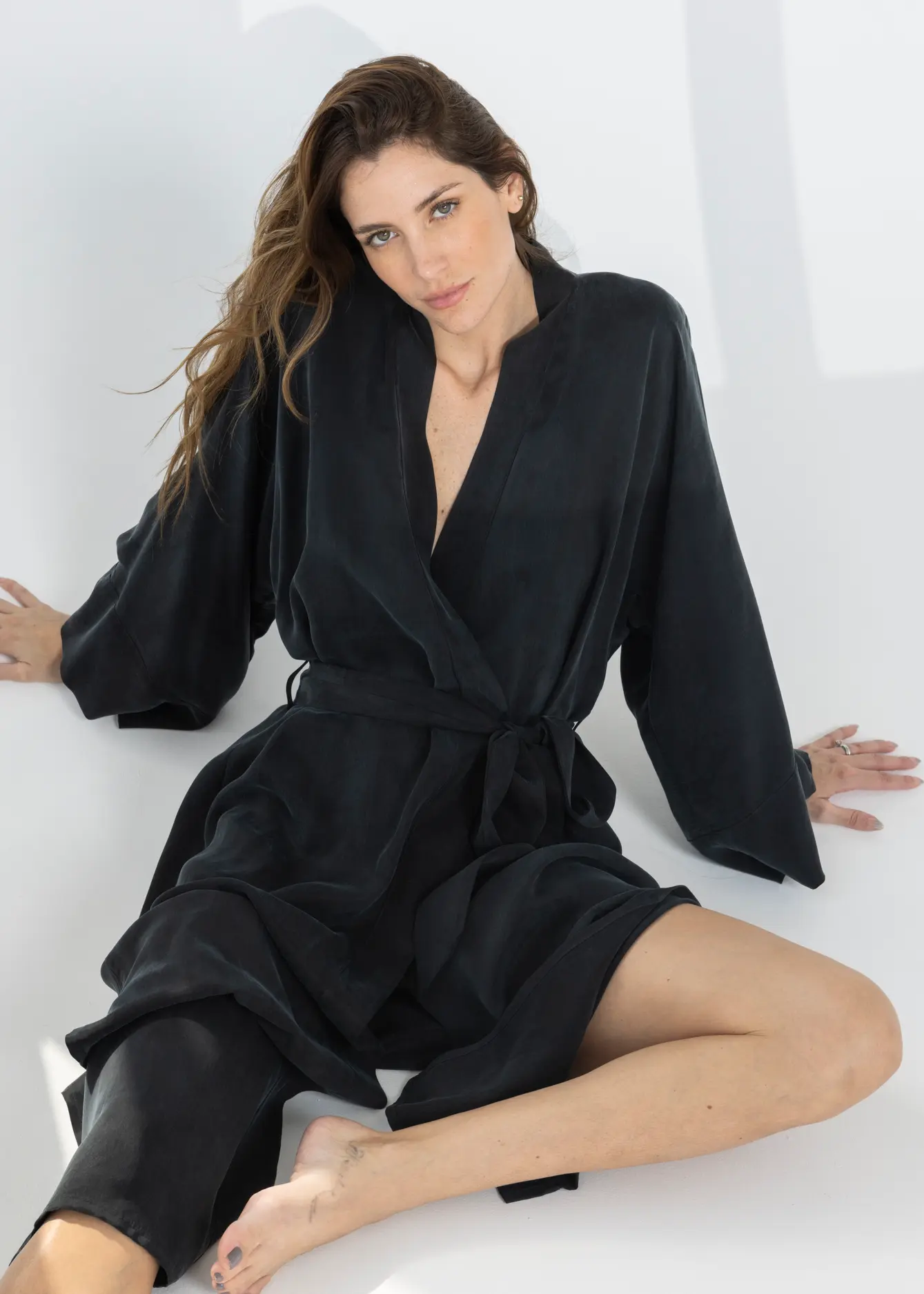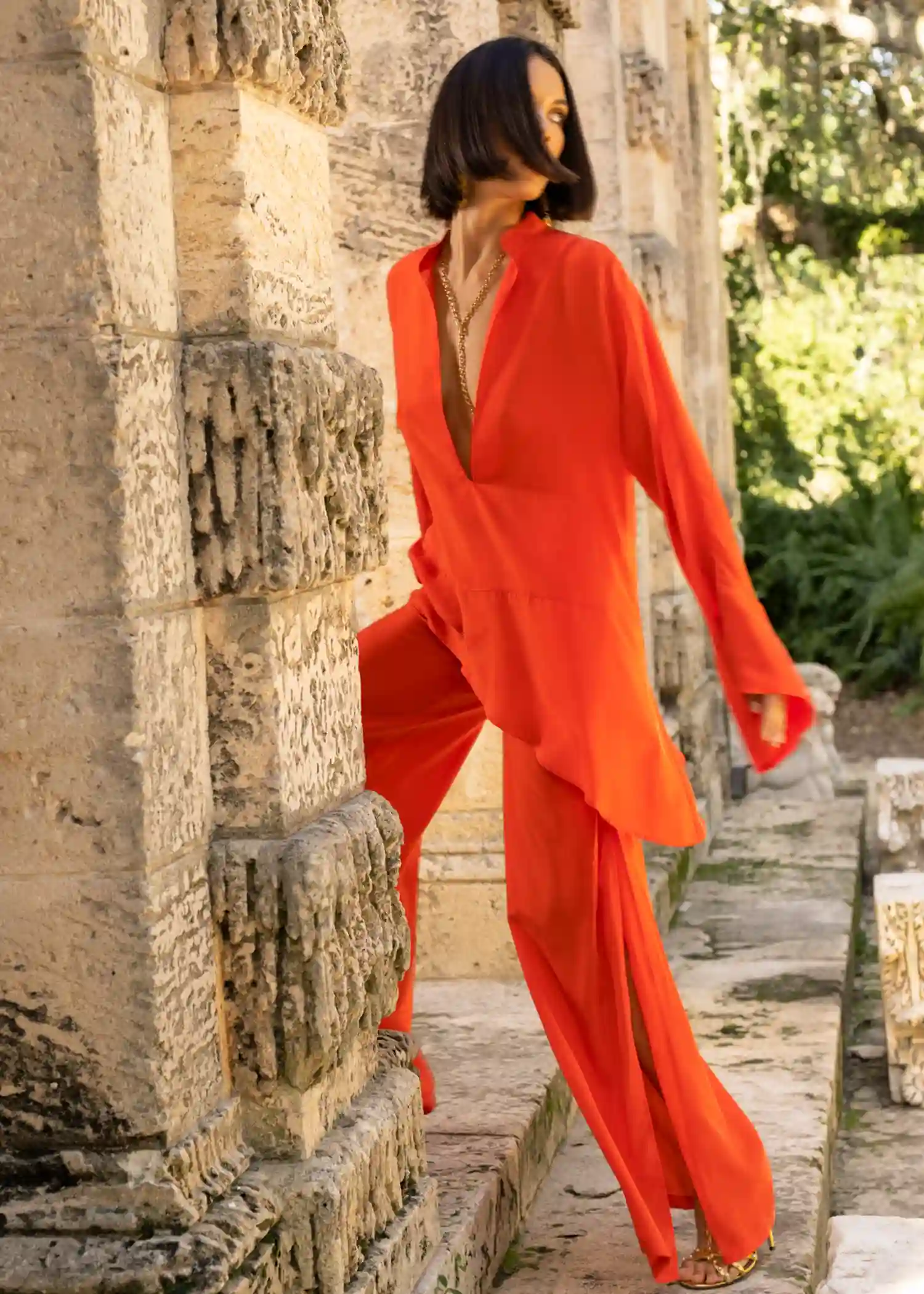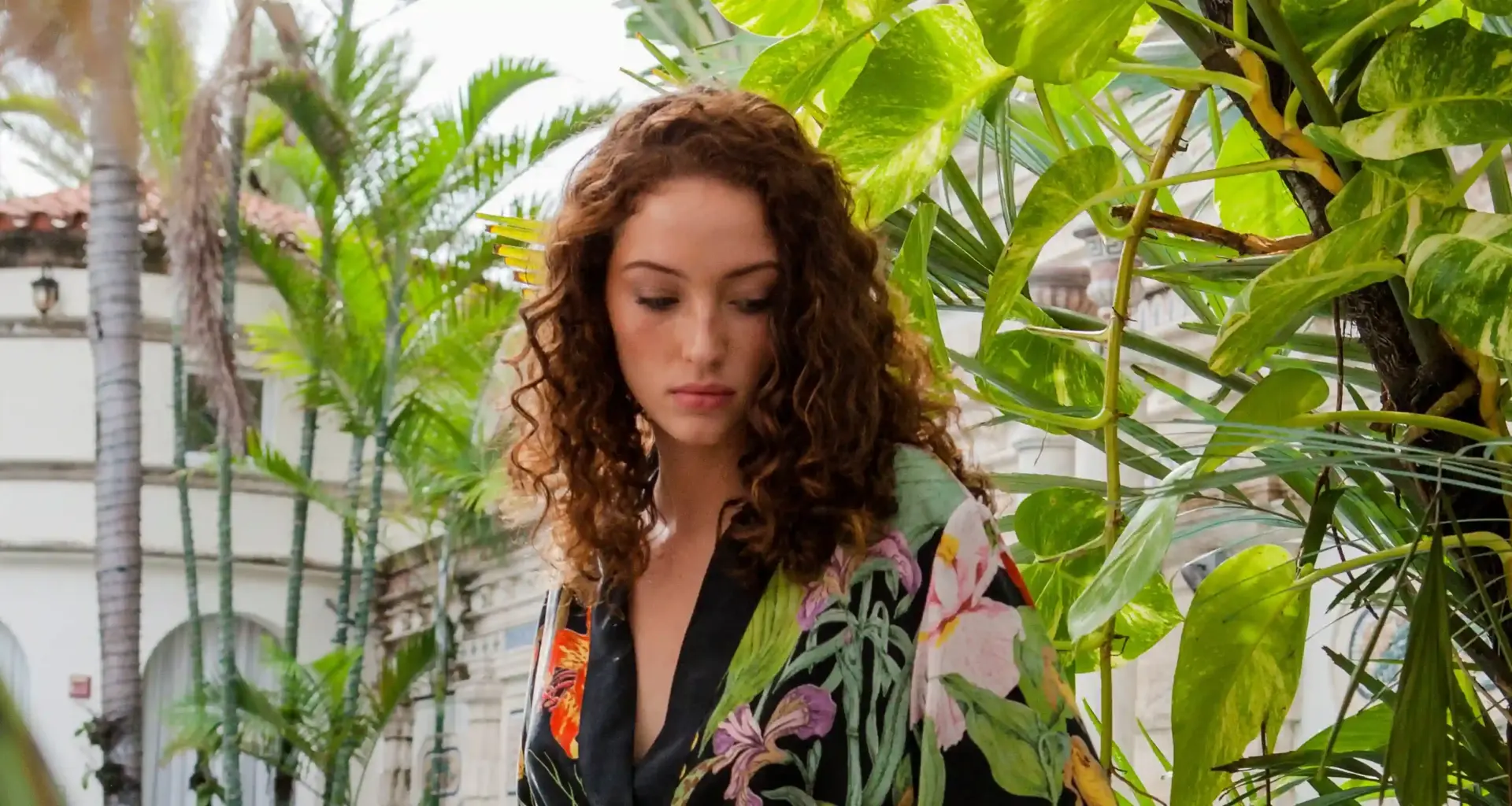Turkish Fashion Designer Nilüfer Bracco Combines Sustainable Designs with Enduring Style
By Harriet Mays Powell
In the world of fashion, the words “chic” and “sustainable” remain uneasy bedfellows. Even today, only a few top-tier designer brands can claim to have made significant progress. Astonishingly, after the oil industry, the fashion business is the next biggest global polluter. Last summer, photos of vast piles of rotting garments strewn along the coast of Ghana drew widespread attention to this disturbing problem. Some discarded clothes end up in landfills, but only a small percentage will decompose quickly, with the vast majority taking decades to break down completely.
To become a certified sustainable brand, as defined by the United Nations’ Sustainable Development Goals, is not an easy or inexpensive ambition. For starters, there are issues of transparency, from decoding the myriad of threads that make up the supply chain, to verifying that those supplies are ethically sourced (ensuring that the workers are adequately compensated), to certifying that the production processes are non-polluting. These requirements can be daunting to burgeoning brands. But it is the established “fast fashion” companies – think H&M and Zara – with their ability to sell a shirt for the price of a Starbucks coffee, which continue to be chiefly responsible for most of the harmful effects of the fashion system. They vastly overproduce season after season, resulting in an enormous surplus of items, which are then jettisoned.
Enter Nilüfer Bracco, a Turkish designer based in Miami, who, at the onset of the pandemic three years ago, forged ahead with her plans to launch niLuu, a collection of chic and wearable clothing, ethically produced and completely sustainable. Even the firm’s elegant black boxes are made from recycled cardboard.

Standing at an imposing height of 6-foot-2 with striking features and a large serpentine tattoo, Bracco greets me warmly at the front door of her Miami home. She is profusely apologetic because her driveway is dotted with puddles from the earlier rain. Instead of sitting at a formal table in the dining area, she suggests we relax on comfortable couches in the living room, surrounded by modern art, with a view of Biscayne Bay over an infinity pool.
Raised in a small town outside of Istanbul, Bracco’s ticket to explore the wider world was her talent as an athlete. She joined Turkey’s leading volleyball team and, from there, was recruited to play at a midwestern university on a full scholarship. She readily admits that it was a complete culture shock. “They didn’t know what to make of me,” she says. “They treated me like some kind of exotic bird.” After graduation, Bracco moved to New York and attended Parsons School of Design. There, she met her Italian husband. A child came along, and they moved to Miami to begin the next chapter in their lives.
Bracco tells me that she is inspired by the rich tradition of textiles in her native land. Istanbul was a terminus of the famous Silk Road, a trade artery that brought luxury goods from China to the Mediterranean. She felt drawn to the smooth and sensuous texture of silk. And on a trip with her brother to a fabric fair in Germany, she discovered a “vegan silk” supplier. He told her how silk is made, and why he eschewed the traditional process and opted instead to create an artificial alternative.
Even after a long career in fashion journalism, I didn’t really know how silk was produced. Bracco explained. In brief, the fiber is harvested from the silkworm’s cocoon while the pupa inside is on its way to becoming a moth. In order to extract the maximum amount of fiber, the cocoon is boiled, steamed, or blasted with hot air to destroy the silkworm inside. If the grub is allowed to mature and eat its way out of the cocoon, the long fibers are broken. Around 3,000 or 4,000 cocoons are required to make a single pound of silk.



Bracco was intrigued by the supplier’s tale, but it was the quality of his new fabric that hooked her. The silk substitute, called Cupro, is made from recycled cotton linter
– the fluffy fiber around the plant’s seeds which are a byproduct of the cotton harvest. This is spun into a yarn by the Japanese Asahi Kasei Corporation, whose state-of-the-art facilities are able to achieve zero waste emissions and can recycle 40 percent of the expended energy back into the system through a “closed loop” production cycle.
The yarn is then woven in Turkey by the İpeker firm. The resulting fabric is hypoallergenic, anti-static, breathable, biodegradable, and – like traditional silk – glides easily across the skin. İpeker used to be a traditional silk producer — “İpek” means “silk” in Turkish
— but as the world’s consciousness changed, the company decided to develop alternatives that could deliver the same characteristics. Their new fabric uses proprietary processes for dyeing, printing, and finishing that consume significantly less water, energy, and chemicals, while achieving the same depth of color and luxurious feel as traditional silk.
For Bracco, the last phase of the production process takes place in a women-led atelier in Turkey. There, her team develops the intricate patterns and prints that have become a hallmark of the brand. Samples are sent back to the U.S. for Bracco’s meticulous inspection. The garments are then manufactured and shipped to a warehouse in North Miami for distribution.
Launching during the pandemic was a learning lesson, Bracco says, because the business had to rely solely on e-commerce. When the crisis abated, she quickly found that in a physical retail environment, where prospective purchasers can touch and feel the fabric, sales increase exponentially. After less than three years, Bracco proudly lists her current retail partners, which include Neiman Marcus, Bergdorf Goodman, Nordstrom, several of Gwyneth Paltrow’s GOOP stores, and a high-end boutique in St. Barth’s. Earlier this year, she did a pop-up in Dubai that proved so successful they soon signed a year-long lease.


Initially launching with sleep masks, pillowcases, and kimonos, the line has since expanded to include ready-to-wear and bridal collections. Bracco has abandoned the initial term “loungewear,” and now prefers to call her collection “silk wear,” because the pieces are so versatile. They can be worn during the day, be accessorized at night, and are ideally suited for traveling. “They go with your flow,” she says with a grin.
All niLuu garments are biodegradable. Unlike traditional silk, the clothes do not have to be dry cleaned and can be machine washed, according to Bracco. If they do end up in a landfill, they will dissolve by 50 percent in about two months. But with a price range of $80 to $1,000, and given the timeless and adaptable silhouettes, this is not throw-away dressing.
So, what’s next for Bracco? She already has plans to develop a line of athleisure wear by adding stretch to her signature fabric. Given her history as a star athlete, this seems like a natural progression for her brand.












